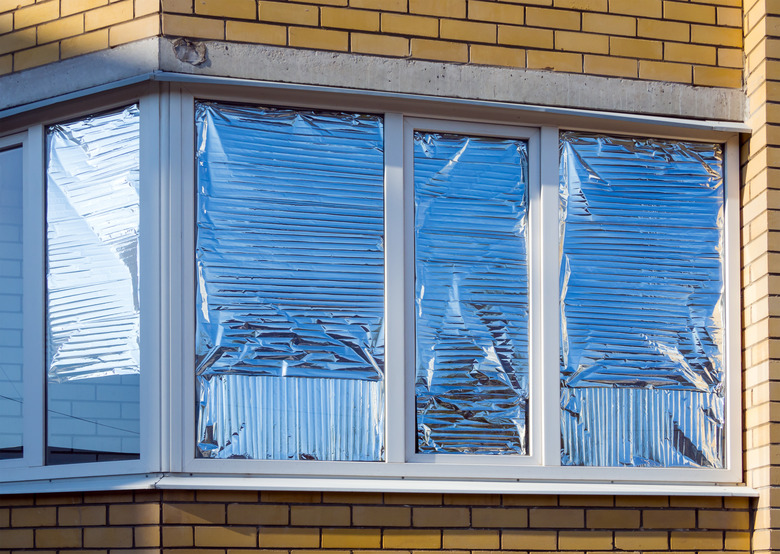Why Do People Put Foil On Their Windows?
Ever drive down the road and spot a house with tin foil covering its windows? While the shiny silver panes might look a little unusual, there are actually a few very good reasons they exist — putting tin foil (also known as aluminum foil) in your windows keeps your house cooler, darker, and more private. Perfect for a sweltering summer.
What's the purpose of covering windows with tin foil?
What's the purpose of covering windows with tin foil?
To Stay Cool: The most common reason people line their windows with tin foil is to keep their house protected from the sun's rays — and the radiant heat associated with them."It's moderately effective, as it does reflect the sun's infrared heat, acting as a mirror and casting most of the heat away from your windows," chemist Dr. Mark Coster, founder of STEM educational toy resource stemgeek.com, tells Hunker. "On the flip side, it's also a conductor of heat, which means some of the heat will easily pass through it and end up in your home."
To Darken a Room: Blackout curtains can be a splurge, so for a more budget-friendly option, some people simply tape aluminum foil to their windows. Because the metal is opaque, no light will get through.
For Privacy: Again, window treatments are expensive! Tin foil, however, is not, making taping it to a window an affordable way to create some privacy.
Is covering windows with tin foil safe?
Is covering windows with tin foil safe?
Yes, absolutely! Considering that it's frequently used in the oven, you don't have to worry about the tin foil melting, emitting toxic materials, or combusting due to the sun's rays. In fact, its melting point is a staggering 1,220 degrees Fahrenheit. It also won't attract lightning to your house, as some rumors claim.
The only potential issue is that the glare reflecting away from your house may be distracting to neighbors or passersby. Ultimately, though, it won't hurt them — as long as they don't stare into the light for an extended period of time.
However, when it comes to cons, tin foil isn't the most aesthetically pleasing sun-blocking solution. Tin foil also isn't eco-friendly, but if you are planning on keeping it in your windows for an extended period of time, or reusing it year after year, it is technically better than using it once for cooking and then throwing it away.
How should I cover my windows with tin foil to keep cool?
How should I cover my windows with tin foil to keep cool?
For starters, make sure the shiny side of the tin foil is facing out, as the more reflective surface will do a better job redirecting radiant heat. But to really double down on heat prevention, the key is to add layers — and not only extra layers of tin foil. "If you want the best results, it's best to pair tin foil with some other insulator such as styrofoam," says Dr. Coster.
The technique is actually pretty similar to what NASA does on its own satellites to protect sensitive instruments from radiation. But instead of tin foil, NASA uses a higher-tech material called multi-layer insulation, or MLI. That said, NASA's Voyager deep-space probes were actually sheathed in kitchen-grade tin foil at the last minute to protect them from radiation — so yes, this works!
